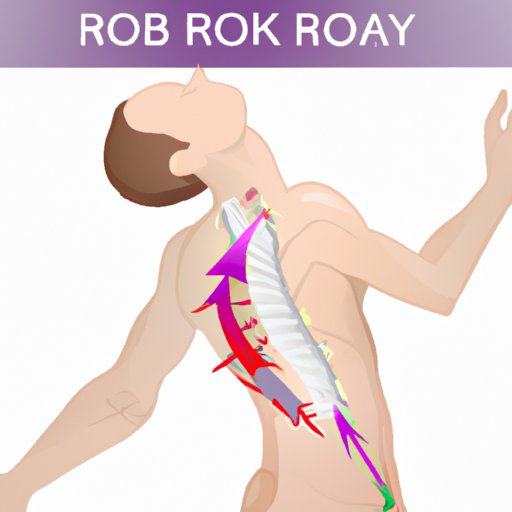
I. Introduction
Cracking or fracturing a rib is a painful and uncomfortable experience. It can be caused by a blunt force trauma or a fall, and while many people can fully recover from it within six weeks, proper care and treatment are crucial to prevent further injury and promote quick healing. In this article, we’ll discuss rest and recovery, pain management, breathing techniques, protective measures, and when to seek medical attention.
II. Rest and Recovery
Rest and recovery are essential to help the body heal a cracked rib. Resting allows the affected area to recover and prevents further damage. It is recommended to limit physical activity for six weeks until the cracked rib is entirely healed.
During this time, it is recommended to avoid strenuous activities such as lifting heavy objects, exercises involving the upper body, and standing for extended periods. If necessary, use a sling to support your arm and avoid movements that affect your breathing and chest area.
It’s essential to sleep on your back, keeping the affected area elevated and supported to avoid pain and discomfort. Using a pillow or two will help you maintain a comfortable position throughout the night.
III. Pain Management
The pain associated with a cracked rib can significantly impact daily life. While it’s not necessary to endure the pain, it’s essential to follow the recommendations of your healthcare provider when taking pain medication.
Over-the-counter anti-inflammatory drugs such as Ibuprofen and acetaminophen can reduce swelling and relieve pain. Applying ice packs to the affected area for 15–20 minutes every few hours can also help manage pain. Heat therapy is another option for pain management. A hot shower or a hot compress can help soothe sore muscles and reduce anxiety.
Prescription medications may be necessary for more severe pain. Your healthcare provider can advise you on the appropriate medication based on your specific situation.
IV. Breathing Techniques
When recovering from a cracked rib, it’s recommended to practice proper breathing techniques to reduce pain and discomfort. Deep breathing can improve oxygen flow to the body, which helps the body heal faster. Pursed-lip breathing is helpful in reducing shortness of breath and can also improve oxygen flow. Intercostal muscle exercises can strengthen the muscles between the ribs, which can reduce pain caused by a cracked rib.
V. Protective Measures
Avoiding activities that may aggravate your condition is essential, which may involve wearing a protective brace to keep the affected area supported. Your healthcare provider can advise you on the appropriate brace to use and how long to use it. Taping the affected area is another option to relieve pain and provide support.
VI. When to Seek Medical Attention
Sometimes a cracked rib may require medical attention. If you experience severe pain, shortness of breath, or suspect damage to internal organs, seek medical attention immediately.
You may also notice swelling in the affected region, which could be a sign of a more severe injury or potential for fluid buildup in the chest. These are signs of a more severe injury to which you should seek medical attention immediately.
VII. Conclusion
A cracked rib can be a painful experience, but it’s crucial to follow care and treatment recommendations to promote quick healing and avoid further injury. Proper rest, pain management, breathing techniques, protective measures, and seeking medical attention when necessary are essential steps to a quick and full recovery. With appropriate care, you can comfortably return to your routine within approximately six weeks.




